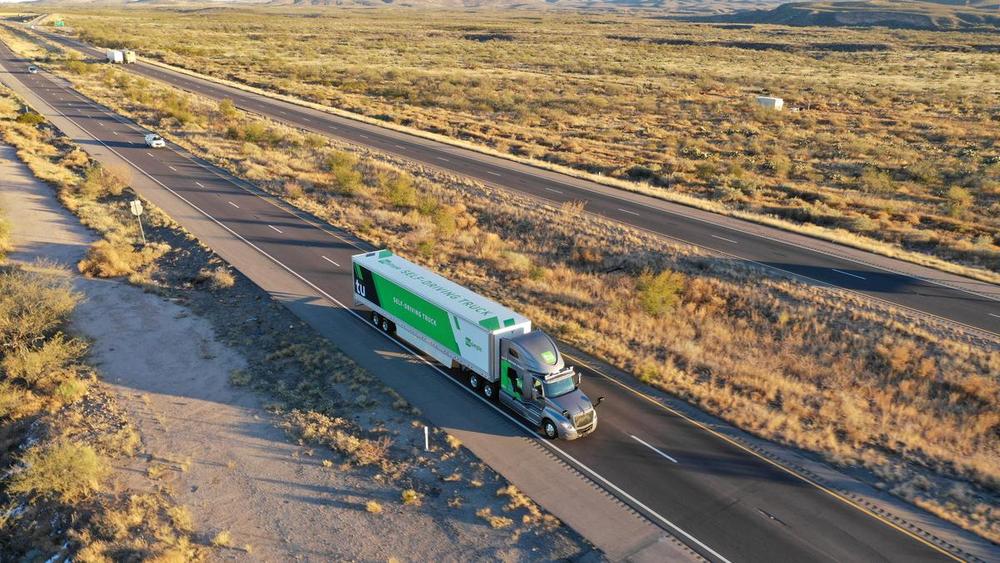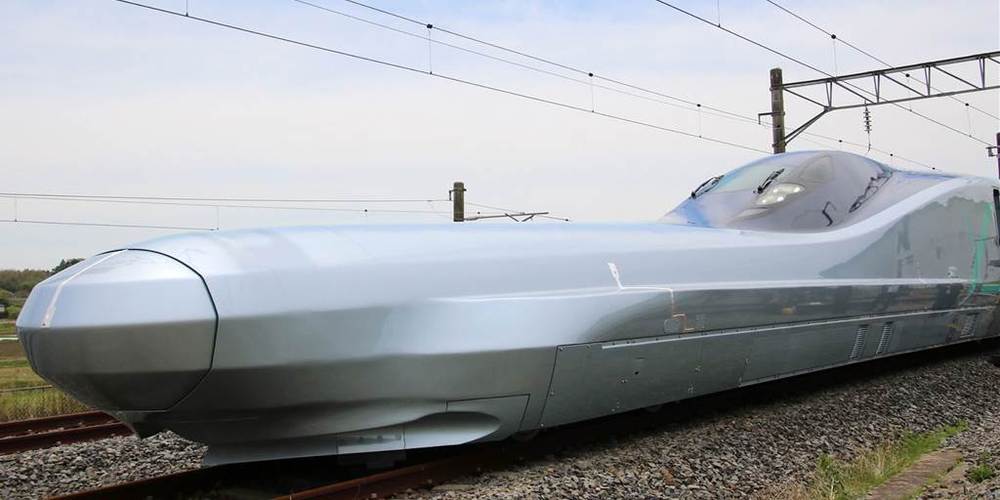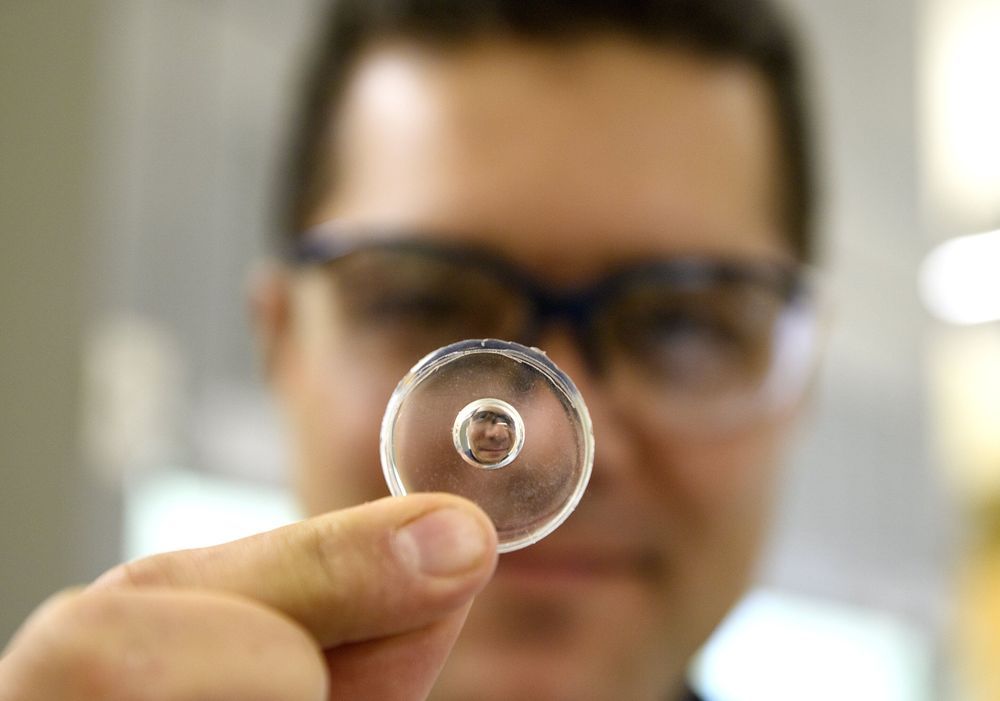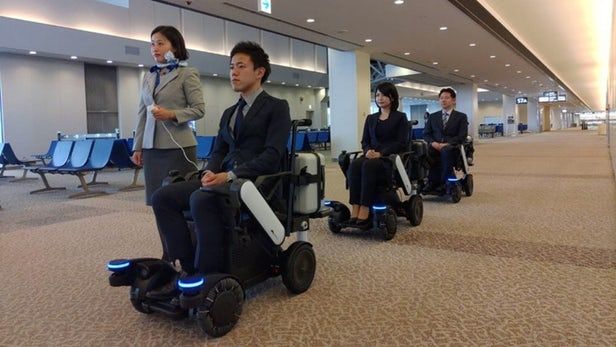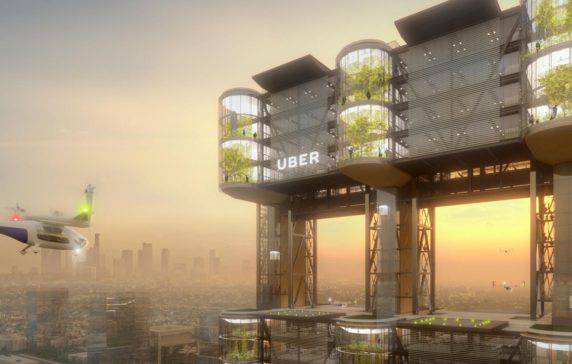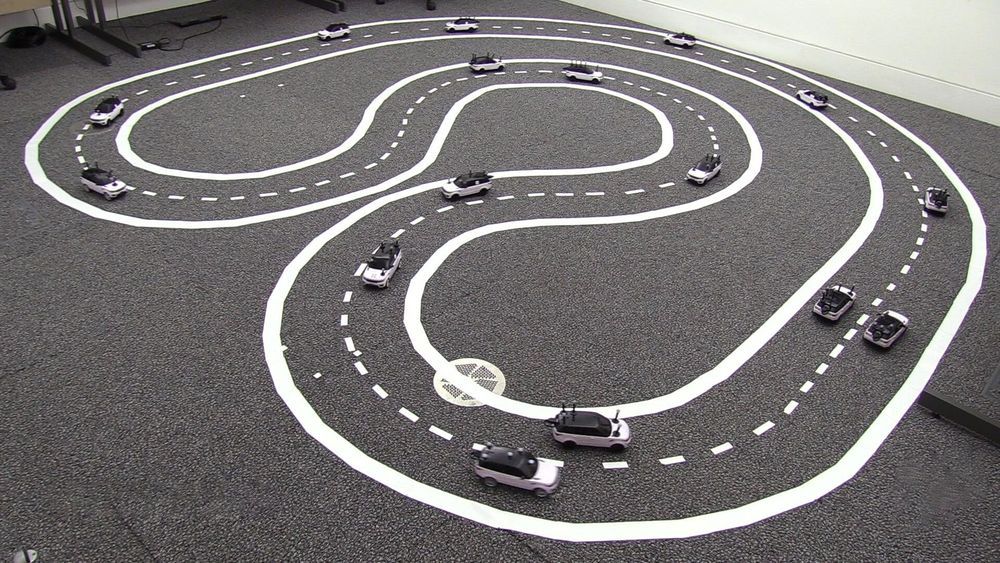Archive for the ‘transportation’ category: Page 424
May 21, 2019
In Ford’s future, two-legged robots and self-driving cars could team up on deliveries
Posted by Klaus Baldauf in categories: robotics/AI, transportation
Autonomous vehicles might someday be able to navigate bustling city streets to deliver groceries, pizzas, and other packages without a human behind the wheel. But that doesn’t solve what Ford Motor CTO Ken Washington describes as the last 50-foot problem.
Ford and startup Agility Robotics are partnering in a research project that will test how two-legged robots and self-driving vehicles can work together to solve that curb-to-door problem. Agility’s Digit, a two-legged robot that has a lidar where its head should be, will be used in the project. The robot, which is capable of lifting 40 pounds, can ride along in a self-driving vehicle and be deployed when needed to delivery packages.
“We’re looking at the opportunity of autonomous vehicles through the lens of the consumer and we know from some early experimentation that there are challenges with the last 50 feet,” Washington told TechCrunch in a recent interview. Finding a solution could be an important differentiator for Ford’s commercial robotaxi service, which it plans to launch in 2021.
May 21, 2019
Self-driving trucks begin mail delivery test for U.S. Postal Service
Posted by Quinn Sena in categories: robotics/AI, transportation
(Reuters) — The U.S. Postal Service on Tuesday started a two-week test transporting mail across three Southwestern states using self-driving trucks, a step forward in the effort to commercialize autonomous vehicle technology for hauling freight.
May 21, 2019
Superfast bullet train that rivals airplane flying times set to debut in Japan
Posted by Quinn Sena in category: transportation
The picture of a “bullet train” speeding past Mount Fuji is an iconic image of modern Japan.
In recent years, however, Japan has lost the “world’s fastest train” title to China — if only by a few miles per hour. But now, Japan plans to reclaim that crown, with a new bullet train that will whisk between cities with journey times that rival passenger jets.
The Alfa-X train, unveiled by rail company JR East, will carry passengers at up to 224 miles per hour, outpacing the fastest Japanese bullet trains in commercial service today by almost 25 miles per hour.
Continue reading “Superfast bullet train that rivals airplane flying times set to debut in Japan” »
May 21, 2019
Is Liquid Silicon the Next Generation of Computer Hardware?
Posted by Quinn Sena in categories: computing, transportation
The idea of “liquid silicon” conjures images from a Terminator film. Fittingly, it is a nascent ’80s computing concept brought to life with modern fabrication techniques, with the potential to alter the course of the future for computer hardware.
“Liquid Si,” with its delicate layers of mono-crystalline silicon and stacked transistors, have real-world implications in the post-Moore semiconductor landscape.
Building unified computer hardware that incorporates system memory, I/O logic, and disk storage into the same module represents a long-standing goal for microchip architects, and attainment is closer now than ever. Using a process called monolithic 3D integration, modern fabrication machines can execute chip designs with silicon and semiconductor circuitry layered on the bottom, solid-state memory arrays on top, and a dense metal-to-metal bus sandwiched in between.
Continue reading “Is Liquid Silicon the Next Generation of Computer Hardware?” »
May 20, 2019
Researchers develop new lens manufacturing technique
Posted by Genevieve Klien in categories: engineering, physics, robotics/AI, transportation
Researchers from Washington State University and Ohio State University have developed a low-cost, easy way to make custom lenses that could help manufacturers avoid the expensive molds required for optical manufacturing.
Led by Lei Li, assistant professor in the School of Mechanical and Materials Engineering, and graduate student, Mojtaba Falahati, the researchers developed a liquid mold from droplets that they can manipulate with magnets to create lenses in a variety of shapes and sizes. Their work is featured on the cover of the journal, Applied Physics Letters.
High-quality lenses are increasingly used in everything from cameras, to self-driving cars, and virtually all robotics, but the traditional molding and casting processes used in their manufacturing require sophisticated and expensive metal molds. So, manufacturers are mostly limited to mass producing one kind of lens.
Continue reading “Researchers develop new lens manufacturing technique” »
May 20, 2019
Startup Hermeus Wants to Build a Hypersonic Jet That Flies at 5 Times the Speed of Sound
Posted by Genevieve Klien in category: transportation
A U.S. venture-capital firm recently led a round of seed investment for Hermeus Corp., a new startup developing a hypersonic aircraft.
May 20, 2019
Self-driving electric wheelchairs to be tested at Narita Airport
Posted by Quinn Sena in categories: robotics/AI, transportation
In a bid to help those with limited mobility get to the gate, Tokyo Narita International Airport is set to welcome a number of self-driving wheelchairs to its floors. With the ability to navigate the airport all on their own, the new wheelchairs are hoped to streamline foot traffic in one of Japan’s busiest airports and form part of a wider plan to boost mobility options at such facilities.
May 20, 2019
How Uber And Lyft Could Transform Healthcare
Posted by Edward Futurem in categories: life extension, transportation
Where #Uber, Facebook, #Apple, #Microsoft, #Google, And #Amazon Are Investing In longevity and health span.
As Uber and Lyft grow their massive footprints, they are beginning to look towards the healthcare industry. Here’s what they’re doing in healthcare already and what they might do next.
May 20, 2019
Driverless cars working together can speed up traffic
Posted by Quinn Sena in categories: robotics/AI, transportation
A fleet of driverless cars working together to keep traffic moving smoothly can improve overall traffic flow by at least 35 percent, researchers have shown.
The researchers, from the University of Cambridge, programmed a small fleet of miniature robotic cars to drive on a multi-lane track and observed how the traffic flow changed when one of the cars stopped.
When the cars were not driving cooperatively, any cars behind the stopped car had to stop or slow down and wait for a gap in the traffic, as would typically happen on a real road. A queue quickly formed behind the stopped car and overall traffic flow was slowed.
Continue reading “Driverless cars working together can speed up traffic” »


